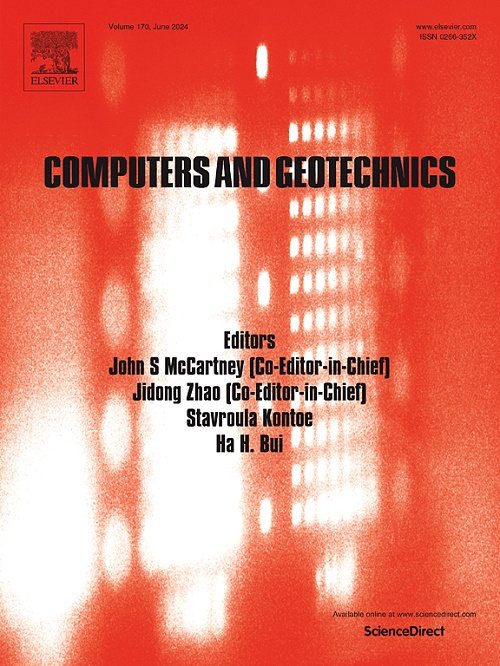Assessing highway resilience subjected to rainfall-induced slope failure
IF 5.3
1区 工程技术
Q1 COMPUTER SCIENCE, INTERDISCIPLINARY APPLICATIONS
引用次数: 0
Abstract
Resilience assessment of the highway under rainfall-induced slope failure can support landslide hazard mitigation effectively. However, this direction is rarely studied. This study proposes a novel probabilistic method to assess highway resilience subjected to rainfall-induced slope failure, where the residual functionality of highways is quantified based on the landslide runout and the recovery process of blocked highways is modelled by a step function. First, a physically based model is built using a two stage FEM-MPM approach to simulate landslide runout under rainfall, and three types of uncertainties involved in resilience assessment of highways are explicitly modelled. To improve computational efficiency, a surrogate model is then created to predict the residual functionality of blocked highways. Finally, the mean value and the coefficient of variation of the highway resilience are estimated via Monte Carlo simulation. A four-lane highway next to a sandy slope is employed to perform the proposed method. The results show that the highway resilience is most sensitive to the strength parameter of the slope. As the variability of the slope strength parameter increases, the mean resilience of the highway decreases and the resilience variability increases. Overall, this study provides a useful tool for assessing highway resilience subjected to rainfall-induced slope failure.
求助全文
约1分钟内获得全文
求助全文
来源期刊

Computers and Geotechnics
地学-地球科学综合
CiteScore
9.10
自引率
15.10%
发文量
438
审稿时长
45 days
期刊介绍:
The use of computers is firmly established in geotechnical engineering and continues to grow rapidly in both engineering practice and academe. The development of advanced numerical techniques and constitutive modeling, in conjunction with rapid developments in computer hardware, enables problems to be tackled that were unthinkable even a few years ago. Computers and Geotechnics provides an up-to-date reference for engineers and researchers engaged in computer aided analysis and research in geotechnical engineering. The journal is intended for an expeditious dissemination of advanced computer applications across a broad range of geotechnical topics. Contributions on advances in numerical algorithms, computer implementation of new constitutive models and probabilistic methods are especially encouraged.
 求助内容:
求助内容: 应助结果提醒方式:
应助结果提醒方式:


